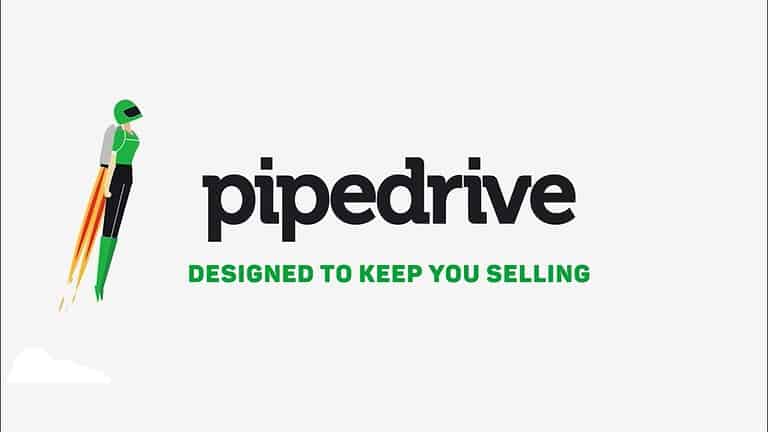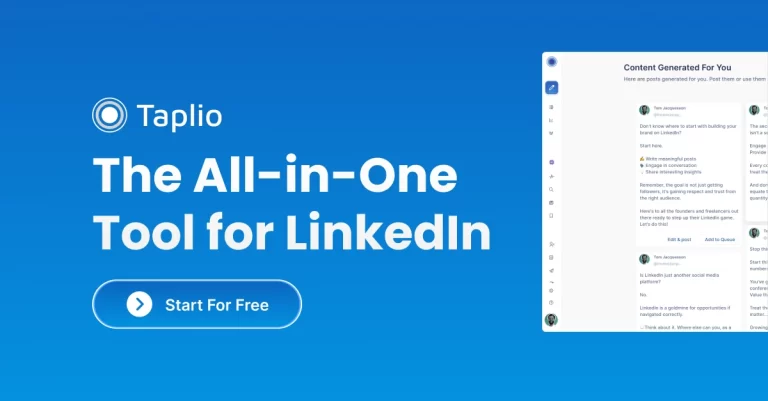Revolutionize Your Online Reach with Proven SEO Tactics
Are you tired of feeling like your business is stuck in a rut, struggling to break through the noise and reach your target audience online?
It’s time to dive deep into SEO (search engine optimization) and learn how to revolutionize your online reach. In today’s digital age, the pivot role of SEO in digital marketing becomes clear for any entrepreneur or small business owner looking to compete in a crowded online marketplace.
So buckle up and get ready to unlock the secrets to success as we dive into the world of SEO and discover how to optimize your website to reach new heights of online visibility and success.
Don’t let your competitors steal the spotlight – it’s time to take control of your online presence and start dominating the search engine results pages. Let’s do this!
Search Engine Optimization (SEO): The Beacon in the Digital Ocean
Imagine the internet as an endless ocean, where countless websites float like ships, vying for the attention of the digital populace. SEO is the lighthouse that guides these ships to shore, ensuring they are seen, visited, and remembered.
It’s a blend of art and science, where strategic keyword placement meets the nuance of human engagement, designed to signal to popular and other search engines that a website is relevant and invaluable to users.
At its core, SEO is about understanding the language of search engines as much as it is about catering to the curiosity of the human mind. It’s a dual focus that requires marketers to predict user intent, weave keywords into compelling narratives, and structure websites so search engines can easily digest and rank them.
This delicate balance between visibility and engagement makes SEO both challenging and rewarding.
On-page SEO & Off-page SEO
SEO’s domain extends beyond mere keywords into the realm of on-page and off-page elements. On-page SEO involves optimizing individual web pages to rank higher and earn more relevant traffic.
This includes refining the content and ensuring that external and internal links, the page title, meta tags, headings, and images are search-engine friendly and resonate with the reader’s quest for information or entertainment.
Conversely, off-page SEO ventures into the broader digital ecosystem, building a website’s reputation through backlinks, social media presence, and other external signals. It’s akin to word-of-mouth in the digital age, where the quality and quantity of external references endorse a website’s credibility and authority.
The Evolution of SEO
As search engines evolve, so too does the SEO landscape. The algorithms that once favored keyword-stuffed content now prioritize rich user experience, mobile optimization, and depth of content relevance.
This shift underscores the importance of staying agile, embracing the fluidity of digital trends, and continuously refining SEO strategies to align with the latest algorithmic preferences. Tools and platforms that offer insights into SEO performance and opportunities become invaluable allies in this ever-changing arena. Page Ads emerge as a beacon for businesses navigating the complexities of SEO. Offering a suite of tools designed to enhance online visibility, Page Ads empowers brands to optimize their content, track their SEO progress, and stay ahead in digital visibility.
Why You Need To Pay Attention to Your SEO

The ultimate goal of SEO transcends mere traffic. It’s about forging connections, engaging audiences, and converting visitors into loyal customers.
It’s a strategic endeavor that blends technical optimization with storytelling, ensuring that every visitor’s journey through a website is informative, enjoyable, and memorable.
In this context, SEO becomes a critical component of a broader digital marketing strategy, intertwining with content marketing, social media, and paid advertising to create a cohesive and compelling online presence. It’s about creating a symphony of digital interactions that attract visitors and inspire them to explore, engage, and return.
The Indispensable Role of SEO in Digital Marketing
In the grand digital marketing scheme, SEO is a testament to the power of visibility, relevance, and user engagement. It’s a strategic imperative that demands creativity and analytical prowess, challenging marketers to balance search engines’ technical demands with users’ ever-evolving expectations.
As businesses navigate the digital landscape, the role of SEO in crafting a successful online presence cannot be overstated. It’s not just about being seen; it’s about being remembered, valued, and chosen amidst the vast expanse of the digital universe.
SEO automation platforms provide the tools and insights needed to excel in SEO, enabling businesses to transform their online presence, captivate their audience, and achieve unprecedented growth in the digital age.
How to Do SEO Right
Mastering search engine optimization (SEO) is essential to establish a dominant online presence. Follow this process for successful SEO implementation:
- Uncover Search Intent Through Keyword Research
- Craft Content with Searchers in Mind
- Master Technical SEO for Easy Indexing
- Build Backlinks for Site Reputation
- Prioritize Mobile-First Experiences
- Boost Page Speed for Better Rankings
- Write Concise And Compelling Title Tags
- Optimize the Meta Description
- Use Descriptive File Names And Alt-Text For Your Images
- Regularly Monitor Your Website’s Performance Metrics
Understanding these key concepts is the first step toward SEO success. Let’s break down each element and learn practical strategies for enhancing your website’s search engine performance.
1. Uncover Search Intent Through Keyword Research
Keyword research is the foundation of successful SEO. It involves understanding your target audience’s language when searching for businesses, products, or services like yours. This insight allows you to tailor your content and website to match their search queries.
How to Execute:
- Brainstorming: Compile a list of terms and phrases relevant to your offerings and industry. Consider the challenges your ideal customers face and how you provide solutions.
- Utilize Research Tools: Employ keyword research tools like Google Keyword Planner or SEMrush. These platforms reveal search volume, suggest related terms, and provide insights into keyword competition.
- Competitive Analysis: Examine the websites that rank well for your target keywords. Identify the terminology they use to gain valuable clues about effective keyword choices.
Keyword research is an iterative process. Re-evaluate your keywords periodically to ensure alignment with evolving search trends and the growth of your business.
2. Craft Content with Searchers in Mind
You know what they say: content is king. Once you understand what your audience is searching for, it’s time to create content that directly addresses those needs. Remember, you’re not just writing for search engines – you’re writing to provide value to real people.
Create content that directly answers the questions your ideal customers are asking. Consider including FAQs or in-depth blog posts that tackle common pain points.
Incorporate your target keywords naturally and conversationally throughout your content. Avoid keyword stuffing, as it can be detrimental to your rankings.
Prioritize creating informative, well-written, and engaging content that offers genuine value.
Produce different types of content, such as blog posts, videos, and infographics, to cater to various learning styles.
3. Master Technical SEO for Easy Indexing
Technical SEO ensures that search engines can easily crawl, understand, and index your website’s pages. Think of it as building a solid foundation for your SEO efforts.
Here’s a list of the basic technical SEO skills you should know and execute in your site structure:
- Sitemaps: Create an XML sitemap to provide search engines with a clear map of your website’s structure, ensuring all necessary pages are indexed.
- Robots.txt File: Use a robots.txt file to guide search engine crawlers and indicate which pages should or should not be indexed.
- Fix Broken Links: Regularly identify and fix broken links, as they can create a poor visitor experience and hinder search engine crawling.
- URL Structure: Use clear, keyword-rich URLs that accurately describe your page content.
- Image Optimization: Compress images to optimize load times and utilize descriptive alt text to provide context for screen readers and search engines.
Technical SEO can seem intimidating, but many website builders (like WordPress) have plugins to simplify these tasks. If you’re not technically inclined, consider working with an SEO specialist to address these aspects of your site.
4. Build Backlinks for Site Reputation
Backlinks are links from other websites that point to your own. They act like votes of confidence, signaling to search engines that your content is valuable and trustworthy. Acquiring quality backlinks is crucial for improving your search rankings.
How do backlinks work?
Backlinks are like endorsements from other websites. When a website links to yours, it tells search engines that your content is credible and worth recommending. The more high-quality backlinks you have pointing to your site, the greater authority your website establishes, and the higher you’re likely to rank in search results.
Here’s you can do backlinks:
- Guest Blog Post: Offer to write guest posts for relevant websites in your industry. Include a natural link to your site within your author bio or the content (when appropriate).
- Resource Page Link Building: Find resource pages relevant to your niche and suggest your content as a valuable addition.
- Broken Link Building: Identify broken links on reputable websites and reach out to suggest your content as a replacement.
- Network & Collaborate: Build relationships with other bloggers and businesses in your field. Opportunities for cross-promotion and backlinks might naturally arise.
5. Prioritize Mobile-First Experiences
With more people accessing the web on smartphones and tablets than ever before, designing your website with mobile devices in mind is essential. Not only does it enhance the experience for your visitors, but it’s also a significant factor in search engine rankings.
Optimize content for mobile by using shorter paragraphs and larger fonts to improve readability on small screens.
Also, it is essential to ensure buttons, links, and navigation menus are easily clickable with fingers, avoiding tiny elements that are difficult to tap accurately.
Lastly, check the page speed. Mobile users expect fast-loading websites. Optimize images, minimize code, and utilize caching to improve page load times.
6. Boost Page Speed for Better Rankings
Visitors will get frustrated and leave if your website takes too long to load. Page speed is crucial in user experience and search engine rankings. Let’s tackle how to make your website lightning-fast.
Using a Content Delivery Network (CDN) can make it happen. A CDN stores copies of your website’s files on servers worldwide, delivering content to visitors from the server closest to them and decreasing load times.
7. Write Concise And Compelling Title Tags
Your title tag is the first thing people see in search results, acting as a mini-advertisement for your page. A well-crafted title tag can dramatically increase your click-through rate, drawing more visitors to your website.
Here’s how you can optimize your title tags:
Include Target Keywords
Including your primary keyword in the title tag is essential for SEO, as it helps search engines understand what your page is about and improves your chances of ranking for that term.
Placing this keyword near the beginning of the title tag can further enhance its relevance to search queries, making it more likely that your page will catch the attention of both search engines and potential visitors.
This strategic placement boosts SEO and ensures your audience knows what to expect from your content immediately.
Keep it Concise
Title tags that exceed 60 characters risk being truncated in search engine results, potentially losing critical information or context that could influence whether someone clicks on your link.
Keeping your title tags within the 50-60-character range ensures that your entire message is visible in search results, giving you complete control over how your content is presented.
This concise approach respects the reader’s time and attention, providing clear, to-the-point information that encourages engagement.
Write for Engagement
Crafting title tags with action-oriented language and an element of curiosity can significantly increase your click-through rates. Including a number can suggest a listicle or a step-by-step guide, offering the reader a clear, tangible value.
Similarly, posing a question can tap into the reader’s curiosity while highlighting a unique benefit that promises them something they won’t find elsewhere. These tactics make your content more appealing and drive more traffic to your website.
Brand with Style
When space permits, including your brand name in the title tag not only aids in brand recognition but also boosts trust among users familiar with your company. This practice can significantly benefit brands with a strong reputation or unique voice.
By associating your content with your brand name, you’re leveraging your reputation to attract more clicks while reinforcing brand awareness among your audience, creating a lasting impression beyond a single search result.
Each page on your website should have a unique and descriptive title tag that accurately reflects its content.
8. Optimize the Meta Description
While not a direct ranking factor, the meta description acts as your sales pitch in search results. It’s your chance to convince searchers that your page is exactly what they want.
The first thing to do is to expand on your title tag, briefly describing your page’s content. Think of it as a 1-2 sentence advertisement.
Also, naturally, incorporate your target keyword (or variations) within the description to avoid cannibalization.
You can also encourage clicks by using phrases like “Learn more,” “Discover the solution,” or “Shop now.”
With all these in mind, one last important thing to remember is to keep your descriptions under 160 characters to prevent truncation in search results.
9. Use Descriptive File Names And Alt-Text For Your Images
Images aren’t just visually appealing and can boost your search engine visibility. By optimizing your photos, you help search engines understand their content and increase your chances of appearing in image search results.
Before uploading, replace generic image file names (like “IMG_1234.jpg”) with descriptive ones that include relevant keywords (“red-running-shoes-womens.jpg”).
Alt-text is the text description that appears if an image fails to load. It’s vital for screen readers used by visually impaired visitors. Describe your images clearly and concisely, incorporating keywords where natural.
Reduce the file size of your images using a tool like TinyPNG. This will help speed up page load times without sacrificing quality.
Don’t neglect image optimization! It adds to the overall SEO value of your website and improves accessibility.
10. Regularly Monitor Your Website’s Performance Metrics
SEO isn’t a set-it-and-forget-it strategy. To succeed, you’ll need to track your SEO metrics, identify areas for improvement, and refine your approach over time.
Always do these key steps to monitor your website’s performance metrics regularly:
Step 1: Set Up Analytics
Utilizing the best SEO tools in the market, such as Google Analytics and Google Search Console, is crucial for understanding how your website performs and visitors interact.
By monitoring SEO metrics like website traffic, bounce rate, conversion rates, and keyword rankings, you gain invaluable insights into what’s working and what isn’t.
This data not only helps you see the immediate effects of your SEO efforts but also guides your strategy by highlighting areas for improvement.
Step 2: Identify Trends
Look for patterns in your data. Are certain pages attracting more organic traffic than others? Where are visitors dropping off?
Perhaps you’ll notice that certain types of content, such as how-to guides or videos, draw more traffic than others, indicating what your audience prefers.
Identifying where visitors drop off can signal issues with particular pages or steps in your conversion funnel, enabling you to make targeted improvements.
Step 3: Measure Your Results
It is crucial to monitor closely how your SEO efforts influence your search engine rankings and overall website performance.
This involves examining your position in search results for targeted keywords and understanding how changes in those rankings affect your traffic and engagement.
By consistently tracking these outcomes, you can quantify the effectiveness of your SEO strategy and justify further investment in specific areas.
Step 4: Adapt and Improve
The insights you gather from analytics and trend analysis are not just for admiration; they’re actionable data points that can drive your strategy forward.
Whether you’re optimizing your website’s structure and content for better performance, targeting new keywords based on emerging trends, or refining your content strategy to better meet your audience’s needs, these insights should inform your ongoing efforts. Adapting and improving based on data ensures that your SEO strategy remains dynamic and responsive to search engine algorithms and user behavior, keeping you ahead of the curve.
Data offers incredible power. Analyze your website’s performance regularly to drive informed decisions and ensure your SEO efforts deliver results.
Key Considerations For A Successful SEO Strategy
Consistency and quality are your best allies when crafting or outsourcing your SEO strategy. Even the most optimized content won’t hold its ground if it doesn’t offer value or effectively engage your audience. It’s not just about peppering your articles with keywords but about weaving them into compelling, informative content that speaks directly to your reader’s needs and interests.
Another critical insight is to stay updated with search engines’ ever-evolving algorithms. What worked yesterday may not yield the same results today. This means regularly auditing your SEO practices and adapting to new trends and algorithm updates. Engage with SEO communities, follow industry leaders, and use marketing analytics tools to track your performance and refine your strategies accordingly.
Lastly, consider the power of technical SEO. Your site’s backend—its loading speed, mobile optimization, and clean, structured code—plays a significant role in how search engines rank your pages. A technically sound website not only pleases search engines but also provides a better user experience, ultimately keeping people coming back.
In the journey to amplify your online reach, remember that SEO is not a one-time task but a continuous process of improvement and adaptation. By providing high-quality, relevant content, staying abreast of SEO trends, and ensuring your website is technically optimized, you’re setting the stage for a digital presence that can truly flourish.
Taking it to the Next Level: Use Ahrefs
To truly enhance your SEO game, consider integrating Ahrefs into your toolkit. This powerful tool illuminates your site’s performance and uncovers competitors’ strategies. Analyze your website’s backlink profile to identify and leverage new link-building opportunities.
Then, use the keyword research tool Ahrefs to discover high-volume terms and niche queries your audience is searching for. By tailoring your content to address these specific questions, you will attract more targeted traffic, which is more likely to convert.
Ahrefs also offers invaluable insights into content gaps within your niche, allowing you to create content that fills these voids and sets you apart from the competition.
Taking it to the Next Level: Use SurferSEO
SurferSEO takes a slightly different, yet equally powerful, approach to boosting your SEO efforts. This tool optimizes your content to match search engines’ understanding of relevance and quality.
Begin by using SurferSEO to analyze the top-performing pages for your target keywords. Understand the commonalities in their structure, keyword usage, and content depth. SurferSEO provides a roadmap to optimize your existing content or create new pieces that closely align with these successful parameters.
Implementing these recommendations can significantly improve your page’s ranking, making your content more visible and attractive to both search engines and your audience. SurferSEO’s real-time content editor also ensures that you maintain the delicate balance between keyword optimization and natural readability, ensuring your content remains engaging and valuable to your readers.
By incorporating Ahrefs and SurferSEO into your SEO strategy, you’re not just following best practices but setting new standards in your niche. These tools offer a competitive edge by providing deep insights and actionable recommendations that can transform how you create and optimize content, ultimately leading to a more substantial, visible online presence.
Final Thoughts on How to Do SEO Right
Mastering SEO is essential to transforming how you connect with your audience online. Throughout this tutorial, we’ve explored how to lay a solid foundation with your SEO strategy, the importance of consistently delivering quality content, staying abreast of search engine algorithm changes, and ensuring your website’s technical health.
Taking your strategy further with tools like Ahrefs and SurferSEO allows you to refine your approach precisely, targeting your content to meet your audience’s needs directly and efficiently.
Why should you take this advice to heart? Because in a digital landscape that’s more competitive than ever, understanding and implementing advanced SEO techniques isn’t just beneficial; it’s crucial.
These insights come from experience and ongoing learning, reflecting the latest trends and proven strategies in digital marketing and automation.
Embrace these strategies, tools, and mindsets, and you’ll find yourself reaching a wider audience and engaging them more deeply. SEO is your bridge to the people looking for your current offer.
By optimizing your online presence thoughtfully and strategically, you’re not just chasing visibility—you’re building connections that can grow into a loyal community around your brand or message.







